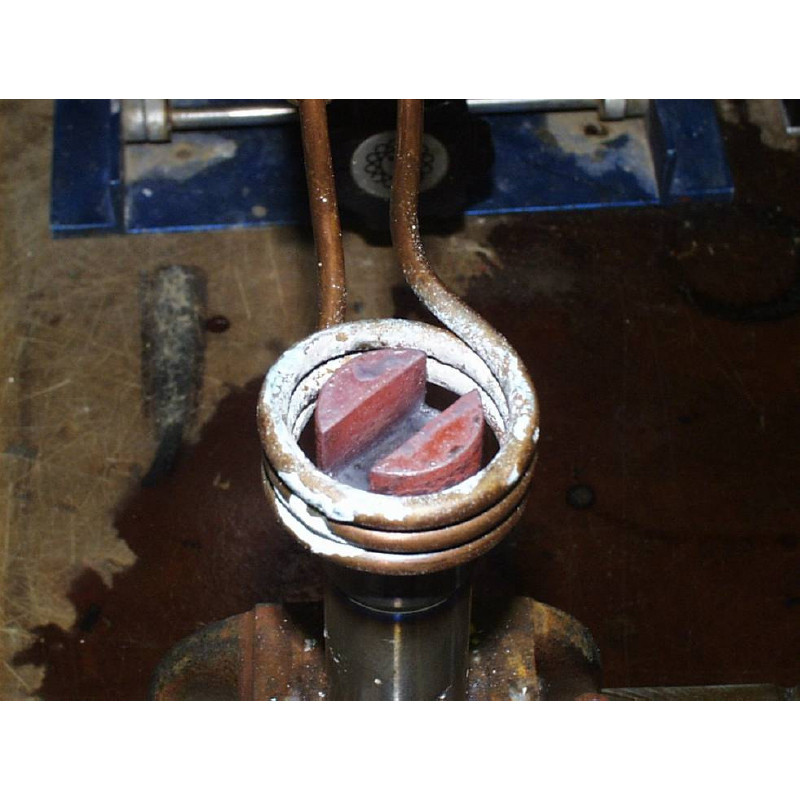

Category


Photos are for informational purposes only. View product specification
please use latin characters
Objective: Annealing the end of a steel hydraulic motor shaft prior to machining.
Frequency: 259 kHz
Material: 0.75” (19mm) diameter steel rod, 6” (152.4mm) long with a keyway at the end.
Temperature: 1350 °F (732 °C)
A three turn helical coil is used for annealing the motor shaft. The end of the motor shaft is placed in the coil and power is applied for 20 seconds to reach 1350 ºF (732 ºC) and turn the steel red hot.
Are you interested in this product? Do you need additional information or individual pricing?
Objective: Annealing the end of a steel hydraulic motor shaft prior to machining.
Frequency: 259 kHz
Material: 0.75” (19mm) diameter steel rod, 6” (152.4mm) long with a keyway at the end.
Temperature: 1350 °F (732 °C)
A three turn helical coil is used for annealing the motor shaft. The end of the motor shaft is placed in the coil and power is applied for 20 seconds to reach 1350 ºF (732 ºC) and turn the steel red hot.
Your review appreciation cannot be sent
Report comment
Report sent
Your report cannot be sent
Write your review
Review sent
Your review cannot be sent
